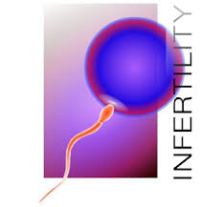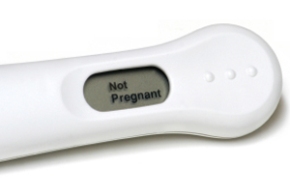 Infertility – difficulty in conceiving a pregnancy. A couple is said to have infertility if the women is not able to conceive for a year without using any birth control methods. 15- 20% of couples will not conceive despite a year of trying. However, this does not mean that these couples won’t conceive later on. Some experts and physicians believe that a time period of 2 years without conception is a better indicator for infertility and they should seek assistance.
Infertility – difficulty in conceiving a pregnancy. A couple is said to have infertility if the women is not able to conceive for a year without using any birth control methods. 15- 20% of couples will not conceive despite a year of trying. However, this does not mean that these couples won’t conceive later on. Some experts and physicians believe that a time period of 2 years without conception is a better indicator for infertility and they should seek assistance.
Sterility- When an individual has no chance to conceive even with treatment (for example: a female does not ovulate or has two blocked fallopian tubes).
WHEN IS THE WOMAN MOST FERTILE??
- A women most fertile period is during ovulation. Ovulation typically occurs on day 11 through day 21 of woman’s cycle.
There are many questions which arise in couples mind when they discover that one of the partner or both are infertile and cannot conceive. Some of them are:
- 1. Is infertility a male or a female problem?
– In early days people used to believe that only females are responsible for a couple being infertile. But recent studies show that it is equally seen both in females and males. 40% of males and 40% of females are seen to be infertile. Other 10% both the partners are infertile and rest of the 10% no cause is known even after testing. So it is always important to test man and woman rather than just blaming one of the partners. No matter what the cause is, these treatments require the active participation of both the partners.
–
- 2. Is secondary infertility more common than primary?
– Yes, secondary infertility means if a couple gets a baby for the first time there is a possibility that they face difficulty conceiving the second time. The reason could be infection, damage to the reproductive organs while giving birth to the first child. Sometimes the aging process also is to be blamed at when it comes to second baby though they dint face any trouble in their first baby. Secondary infertility is much more common than primary infertility. Overall, treatment in females with secondary infertility is to work much better than primary infertility.
CAUSES OF INFERTILITY:
1 FEMALE INFERTILITY: It involves conditions like:
- Endometriosis (uterine lining which is shed every month grows outside the uterus and forms major cause of infertility in woman.
Symptoms: painful menstrual periods, irregular or heavy bleeding, repeated miscarriages. Solution: laparoscopic surgeries and assisted conception treatment
- Ovulation problems:
Symptoms: absent or irregular bleeding and excessively heavy or light bleeding.
Solution: ovulation stimulating drugs
- Poor egg quality:
No symptoms
Solution: surrogacy
- Polycystic ovary syndrome:
Symptoms: irregular menstrual periods, excessive hair growth, weight gain
Solution: ovulation stimulating drugs
- Female tube blockages:
No symptoms
Solution: laparoscopic surgeries or in vitro fertilization (IVF).
- 2. MALE INFERTILITY: It involves conditions like:
- Male tube blockages: caused by Sexually Transmitted Diseases and cause infection like Chlamydia or Gonorrhea, varicocele (varicose veins in the testicles), any obstruction in the vas deferens (the tubes that transport fertile sperm).
Solution: Surgery to repair varicocele
- Sperm problems: Low or no sperm count, poor motility of sperm, abnormal shaped sperm cell
Solution: Fertility drugs, artificial insemination
- Sperm allergy: about 10% of infertile men and women have immune reactions to sperm which cause them to produce antibodies that kills the sperm cells. In men, this is most commonly seen after vasectomy (removal of vas deferens).
Solution: Sperm washing and intrauterine insemination and assisted contraception methods.
- 3. UNEXPLAINED INFERTILITY:
Some experts believe that being overweight, underweight, exercising excessively and also environmental toxins are responsible for an unexplained infertility but no direct links have been confirmed.
Solution: Fertility drugs and IVF
- 4. COMBINATION INFERTILITY:
Both male and female infertility and when one of the partners is more infertile than the other.
HOW COMMON IS INFERTILITY???
- Infertility is a growing issue for many couples. It affects around 10% of the American couples of childbearing age.
- The current increase in infertility might be the result of women choosing to delay in starting a family
- The increase of STD’s such as Chlamydia can lead to female tube blockages preventing pregnancy to occur.
WHAT INCREASES A MAN’S RISK OF INFERTILITY??
A man’s sperm can be changed by his overall lifestyle. Some things that may actually reduce or affect the sperm count.
- Heavy alcohol use
- Drugs
- Excessive smoking
- Age
- Environment toxins like pesticides and even lead
- Health problems like kidney diseases, mumps
- Radiation treatment and chemotherapy for cancer.
WHAT INCREASES A WOMAN’S RISK OF INFERTILITY??
- Age
- Smoking
- Excessive alcohol use
- Stress
- Poor diet
- Being overweight or underweight
- Sexually transmitted infections
- Athletic training
- Hormonal problems like polycystic ovary syndrome and primary ovarian insufficiency.
WHEN SHOULD ONE SEEK DOCTOR??
– Lots of pain during your menstrual period or intercourse
– Abnormal menstrual cycle ( less than 21 days or more than 35 days from the first day of one cycle to the first day of the next)
– Troubled by acne, excessive facial hair growth and weight gain
– Have had fallopian tube infection
– Have had surgery of reproductive organs
– Have had more than one miscarriage
– Your partner has an abnormal sperm analysis
TREATMENT:
– Fertility treatments can increase the likelihood of getting pregnant
– Treatments would include lifestyle changes, supplements, medications, surgery, or assisted reproduction
– Many treatments come under assisted reproduction like Invitrofertilization (IVF), Gameteintrafallopian transfer (GIFT) and Zygote intrafallopian tube transfer (ZIFT). All these procedures involve harvesting a number of eggs in the hope of fertilizing 1 egg, and then insert the fertilized egg into the uterus.
I would elaborate on the treatments as my next topic….
